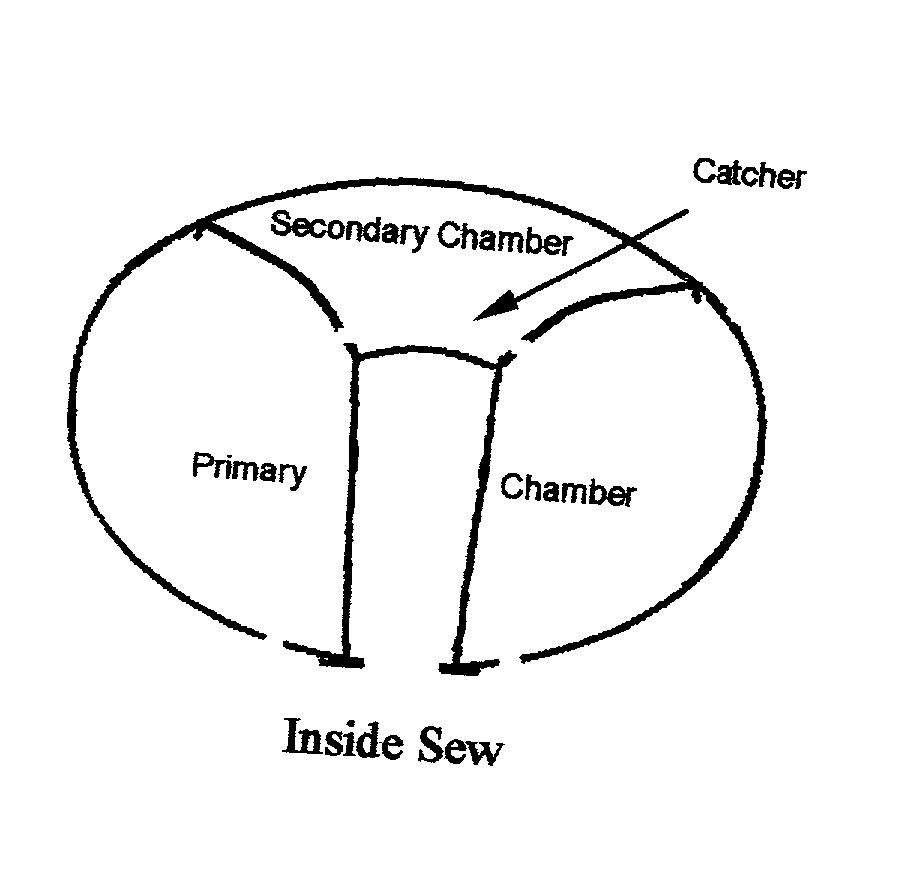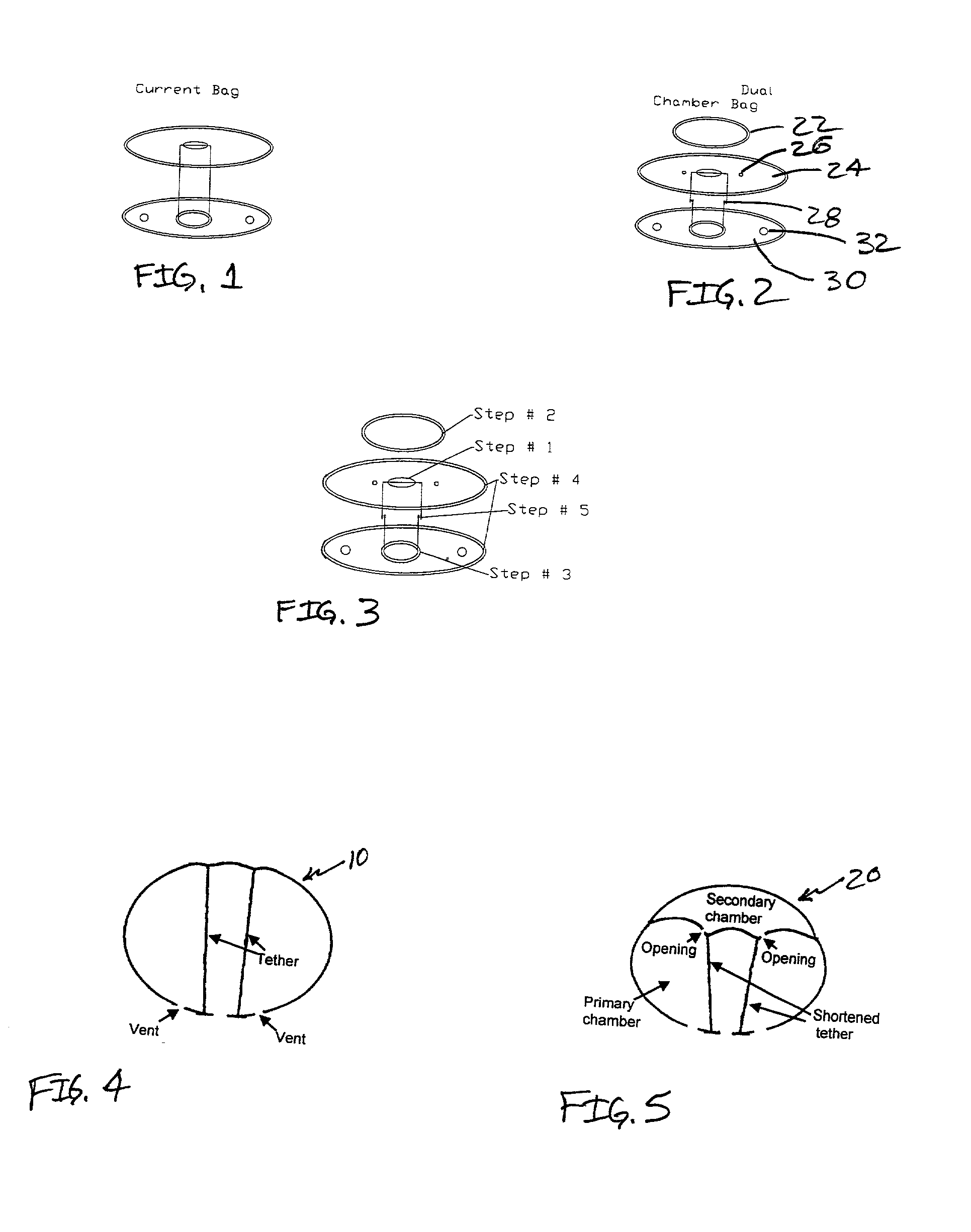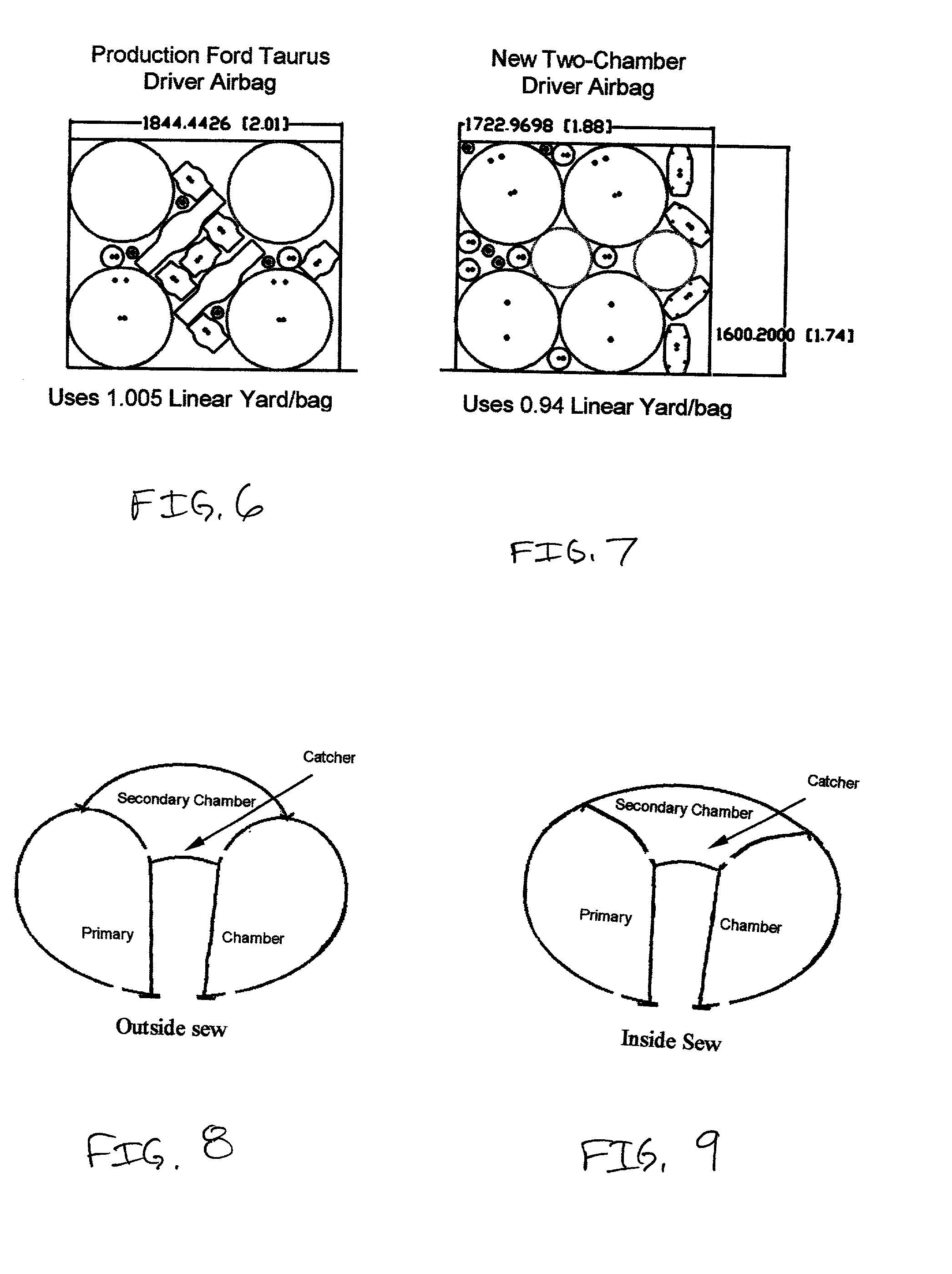Multiple chamber airbags and methods
a multi-chamber, airbag technology, applied in the direction of pedestrian/occupant safety arrangement, vehicular safety arrangment, vehicle components, etc., can solve the problems of high cost of airbag fabric production, labor-intensive cutting and sewing operations, and more complex configuration
- Summary
- Abstract
- Description
- Claims
- Application Information
AI Technical Summary
Benefits of technology
Problems solved by technology
Method used
Image
Examples
Embodiment Construction
[0072] 1. Low cost and easy to construct: The two-chamber airbag is very manufacturing friendly. Most plants can produce such bags without any new equipment. The only extra cost is the piece of fabric that defines the outer surface of the secondary chamber.
[0073] 2. Tethered Design: The two-chamber airbag is tethered, it is very easy to control the shape and excursion of the deployed bag by controlling the length and position of the tether.
[0074] 3. Stronger secondary chamber: In the two chamber airbag design, the final vent of the secondary chamber is through the primary chamber, thus having a relatively strong secondary chamber.
[0075] 4. High safety performance: The two-chamber airbag provides a softer landing for the occupant. It significantly reduces the rebound, minimizing the injuries caused by the deploying airbag. It also provides protection for the short occupant sitting close to the airbag.
[0076] The secondary chamber may have other shapes, e.g. 3D. The secondary chamber m...
PUM
 Login to View More
Login to View More Abstract
Description
Claims
Application Information
 Login to View More
Login to View More - R&D
- Intellectual Property
- Life Sciences
- Materials
- Tech Scout
- Unparalleled Data Quality
- Higher Quality Content
- 60% Fewer Hallucinations
Browse by: Latest US Patents, China's latest patents, Technical Efficacy Thesaurus, Application Domain, Technology Topic, Popular Technical Reports.
© 2025 PatSnap. All rights reserved.Legal|Privacy policy|Modern Slavery Act Transparency Statement|Sitemap|About US| Contact US: help@patsnap.com



